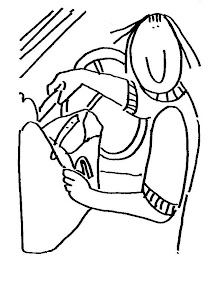Lather up instead
 Wednesday, December 22, 2010 at 1:34AM
Wednesday, December 22, 2010 at 1:34AM  Dang, just when I thought I was being super smart stashing little bottles everywhere. Bummer. Back to the basics. Good old soap and H2O to the rescue.
Dang, just when I thought I was being super smart stashing little bottles everywhere. Bummer. Back to the basics. Good old soap and H2O to the rescue.
The Hidden Health Dangers of Hand Sanitizers
Next time you use hand sanitizer, you may want to think about washing your hands after.
The Food and Drug Administration is currently looking into the safety of triclosan, a chemical found in some hand sanitizers, as well as in antibacterial soaps and body washes.
According to The Washington Post, several new studies have forced the FDA to reevaluate the safety of triclosan. “The FDA said that recent scientific studies raise questions about whether triclosan disrupts the body's endocrine system and whether it helps to create bacteria that are resistant to antibiotics,” the Post reports.
So how common is this particular chemical? The Post reports that traces of it are found in the urine of 75% of the population. That basically puts it on par with McFlurries and Peeps (during Easter at least.) In addition to sanitizers, the FDA says triclosan can be found in clothing, kitchenware, furniture and toys.
For now, the FDA wants to make it clear that the chemical is “not known to be hazardous to humans.” However, triclosan is also not proven to add any health benefits to the products that include it, which makes you wonder why it’s in there at all. According to the FDA, “Consumers concerned about using hand and body soaps with triclosan should wash with regular soap and water.”
Even before this, there was a debate about the merits of using hand sanitizer. Many have argued that these sanitizers fall short of their claim to kill 99.9% of all germs. And medical professionals have known for a while that sanitizers should not be used to clean your hands after touching dirt or body fluids. Your best bet in these cases is to wash your hands. In fact, just the force of the running water can be as crucial to eliminating germs as the cleaning product itself.
 health
health 















